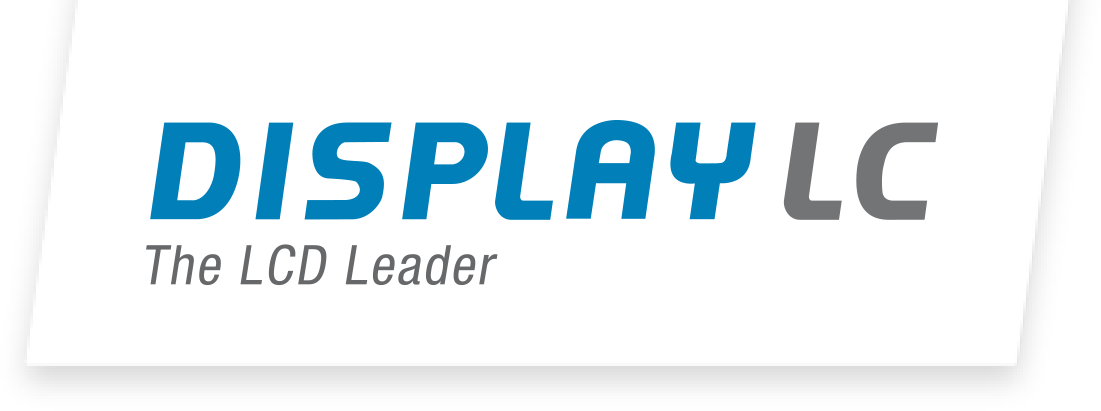
What is "image sticking"?
14.01.21 / M. Bajic
Image sticking, also known as “image retention” or “ghost image”, is a phenomenon in which the displayed image stays faintly visible after changing the content. This phenomenon has been known since the birth of the LCD display and continues to bother panel manufacturers and end users to this day.
Image sticking appears in applications with static image content (icons, logos) or menu input fields that are displayed over a longer period of time. Depending on the specific image composition, and the time of the main symbols being displayed in an unchanged way, image sticking can occur in different intensities. If the display or the display area is used exclusively for such applications (representation of icons or input fields), this phenomenon stays usually unnoticed because the display never shows other content. This phenomenon only becomes visible when a different image content than the "static" one is shown on the display and the contrast differences are high enough (black and white).
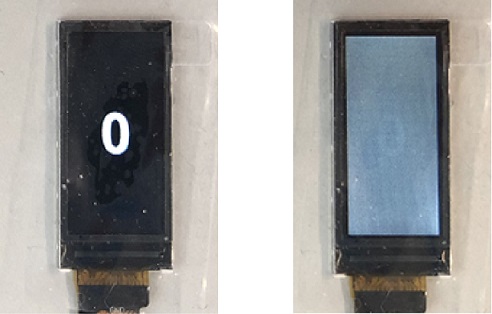
Slight image sticking recognizable after changing to grayscale pattern
The term "burn-in" is also mistakenly used as a synonym for image sticking, which is associated with the old phosphor-containing tube monitor (CRT monitor), where overloading the fluorescent layer led to irreversible burn-in. In contrast to «burn in», image sticking is usually revisable.
What causes image sticking?
Image sticking depends on various factors, such as the specific image content, the duration of the unchanged content and the temperature in the display itself. The phenomenon can even differ from panel to panel due to differences in the manufacturing process (process variance).
Image sticking occurs mainly due to technological reasons and can be traced back to the creation of parasitic charges in the liquid crystal when displaying static content (continuous displaying of the same image). This changes the characteristic of the liquid crystal and therefore ultimately prevents the liquid crystal from returning to its original, relaxed state when changing the content.
For this reason, panel manufacturers cannot completely rule out image sticking. However, the panel manufacturers carry out stress tests that provoke image sticking: a chessboard pattern is used for this, which is “burned in” over a certain period of time. The display is then switched off and changed to a grayscale image in which image sticking is recognizable best. Depending on the «burn-in time», any existing image sticking should disappear after the specified switch-off time. With a burn-in time of 8 hours, for example, a switch-off time of 30 minutes is usually specified.
The chessboard with the black-and-white pattern provokes the phenomenon the fastest due to the high contrast differences. This is best visible on the gray background.
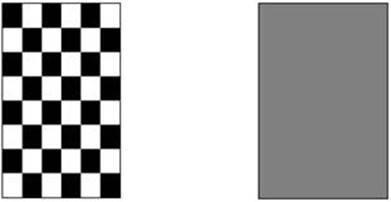
Industrial standard test:
Drive TFT with Chess pattern for 8h @ Room temperature → power off for 30min → Check TFT with grey picture (128 scaled) → No Visible image sticking
Tipps for avoiding image sticking
If it is not possible to avoid continuously static image content, the following tips can help to avoid image sticking:
- Avoid a combination of static image content (symbols / text) and background colors with large contrasts / brightness differences (white-black).
- When using high-contrast colors, a color gradient (grayscale) can be implemented.
- Screen saver can be implemented if the application is inactive for a long time.
- Insert video between the still images.
- After longer continuous operation (> 8 hours) switch off the display for at least 30 minutes.
If the display is used at high ambient temperatures, it should also be noted that the image sticking can appear after a shorter period of time. In this case, we recommend equipping the display with optimized cooling or switching the display off at shorter intervals.
Conclusion
The topic has been known since the beginning of TFT production, but it can be avoided if a few rules are observed: this way, static content can be used without hesitation (as example by time-recording terminals).
If the image sticking does appear, it can be remedied by switching off the display for a few hours, depending on the intensity. Several of our internal tests show that even with endurance stress tests of 360 hours with a chessboard pattern, image sticking disappears completely after 4 hours.
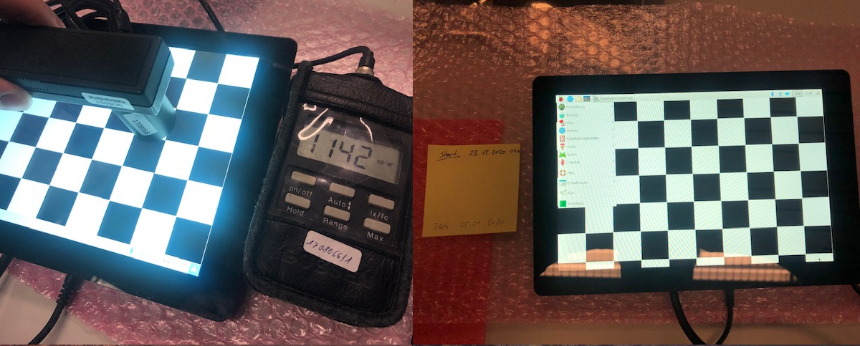
360 hours test with a 1100cd/m2 TFT
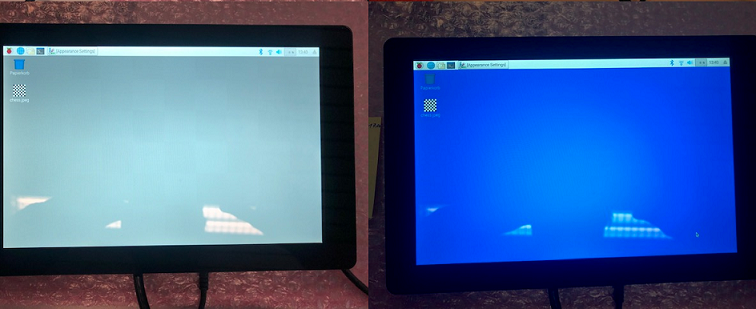
Change to grayscale image -> slight image sticking visible
Change to blue background -> no image sticking visible
Various studies are currently available that show approaches as to how the susceptibility of panel production can be reduced . It is therefore to be expected that the phenomenon will continue to decrease in the future.
If you want to know more about image sticking contact us now for further information!
